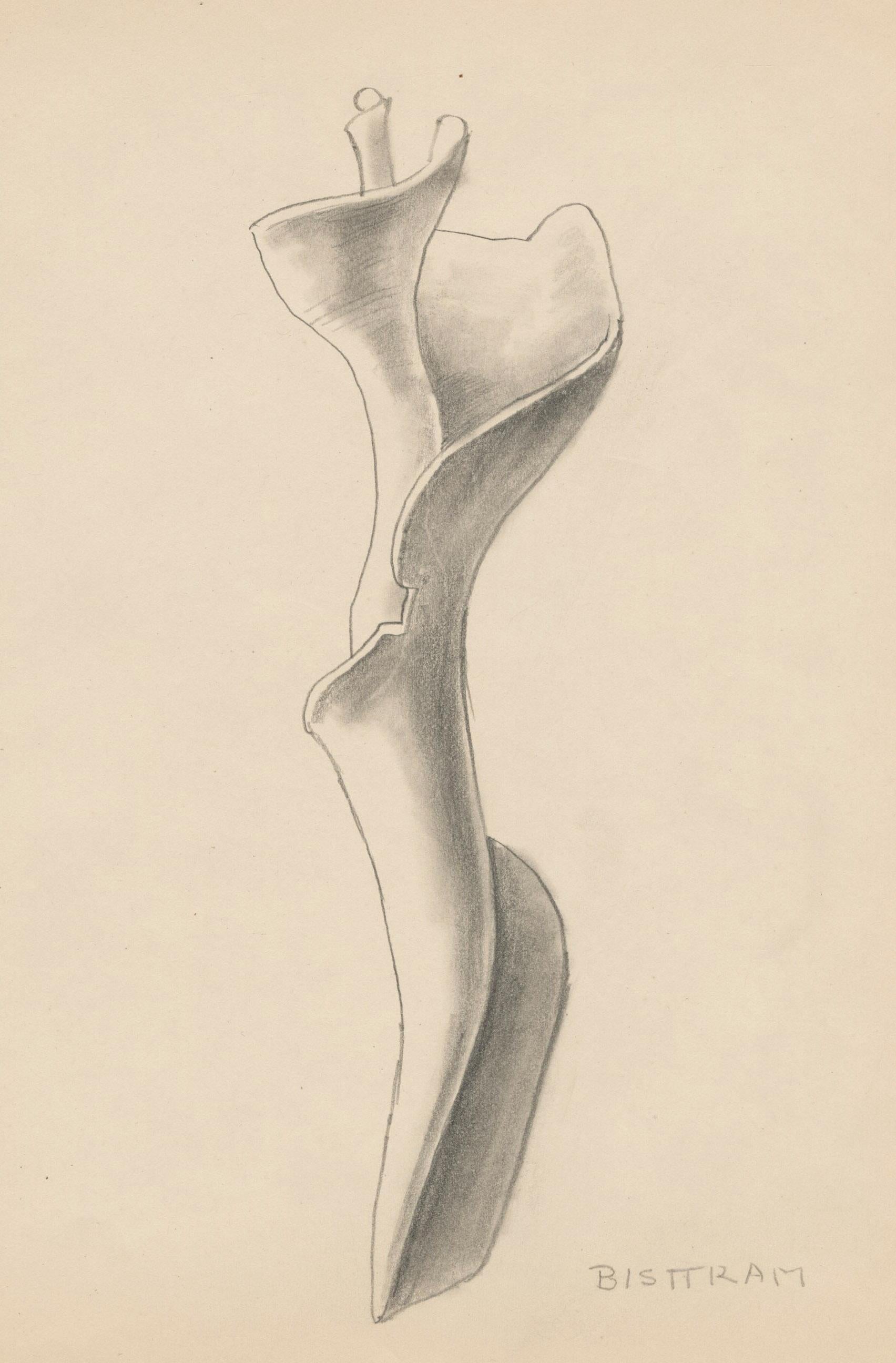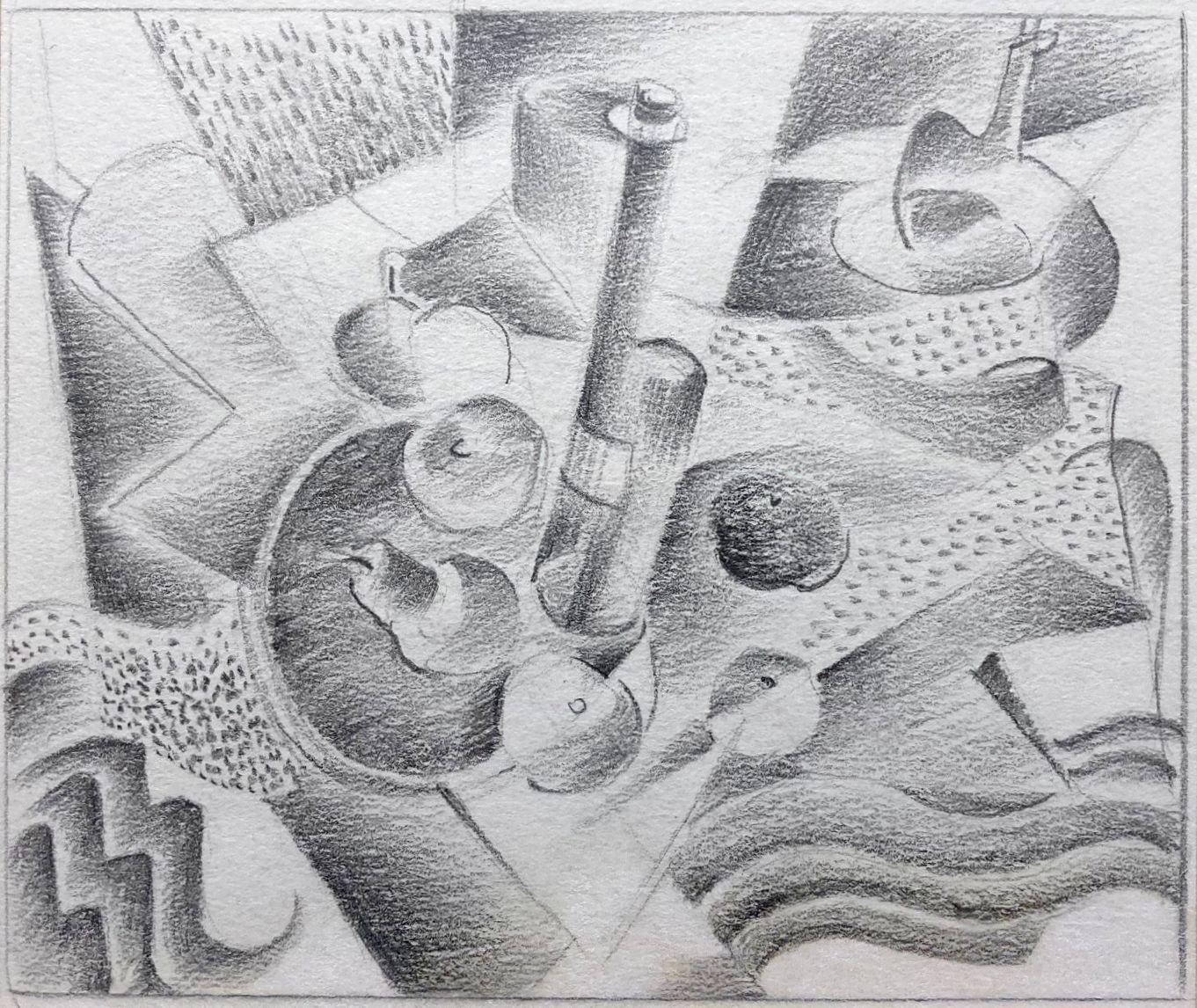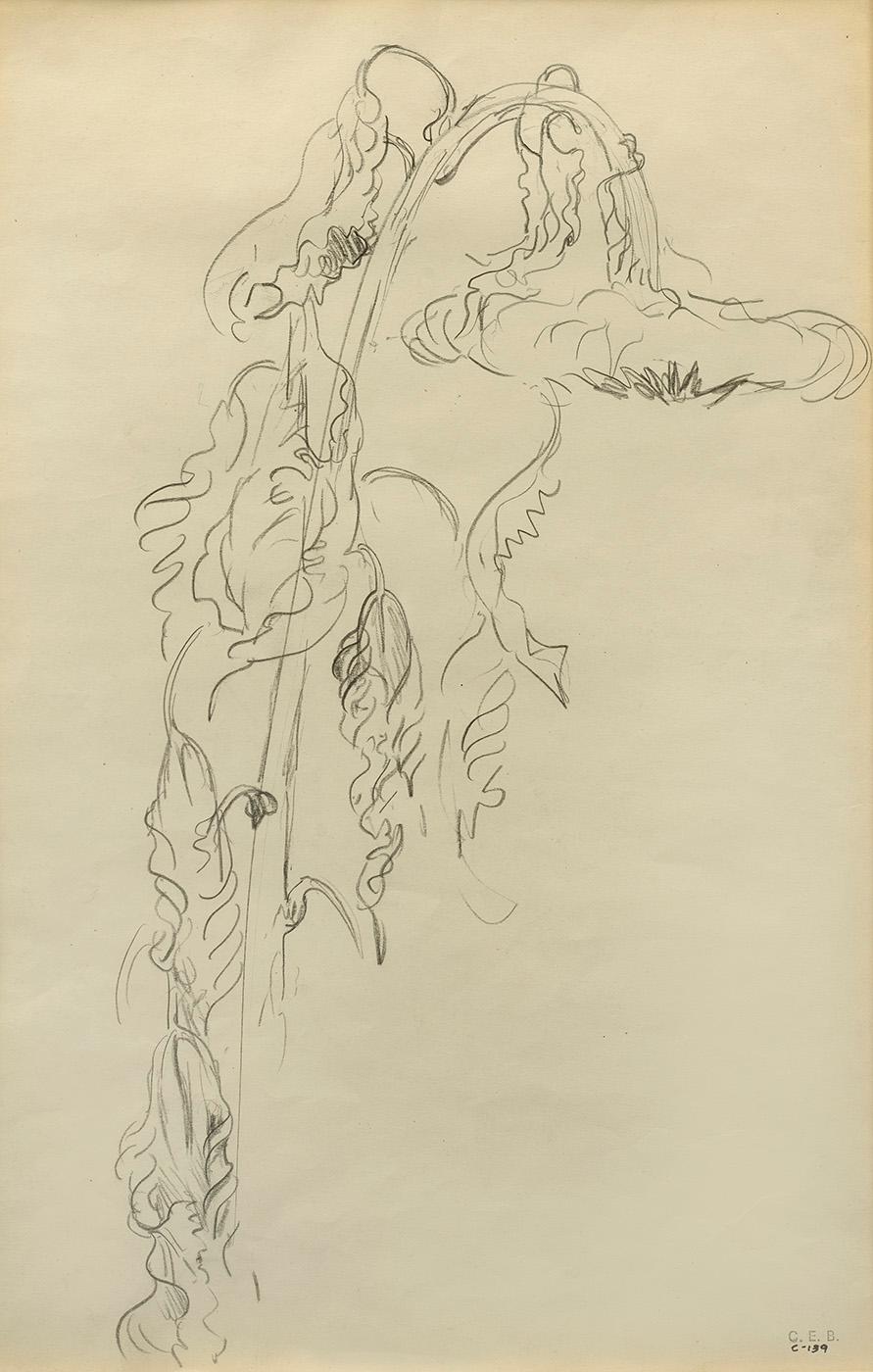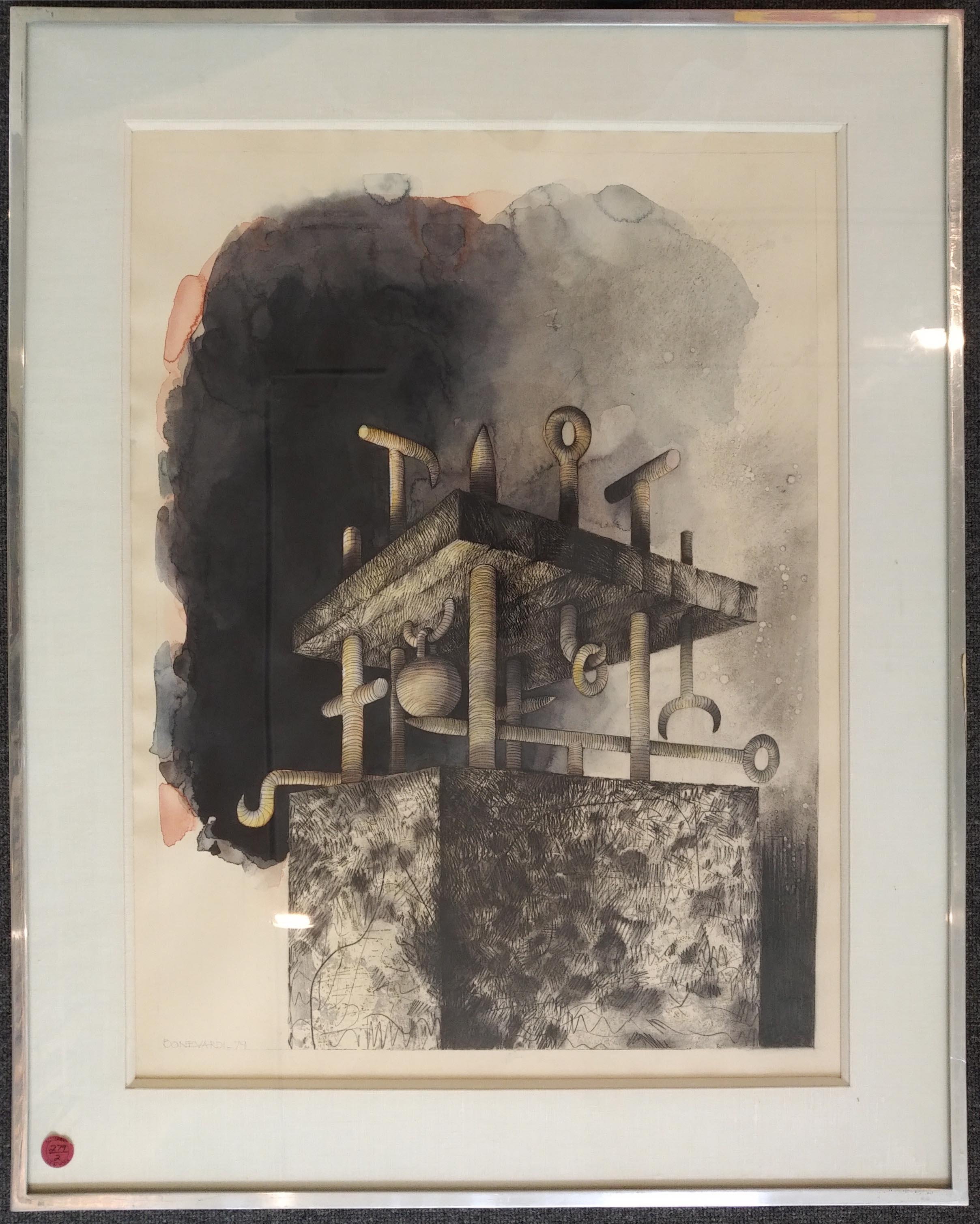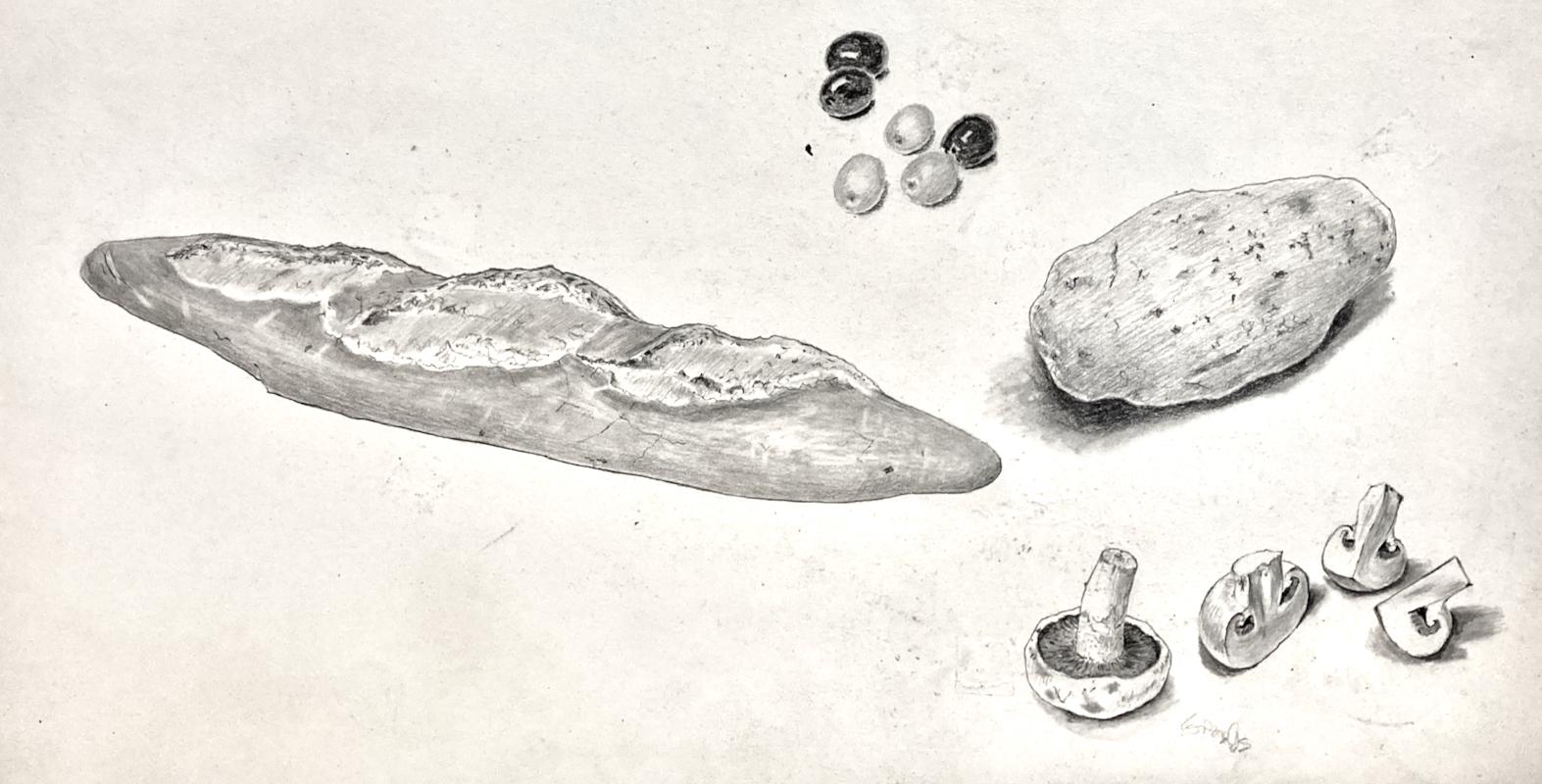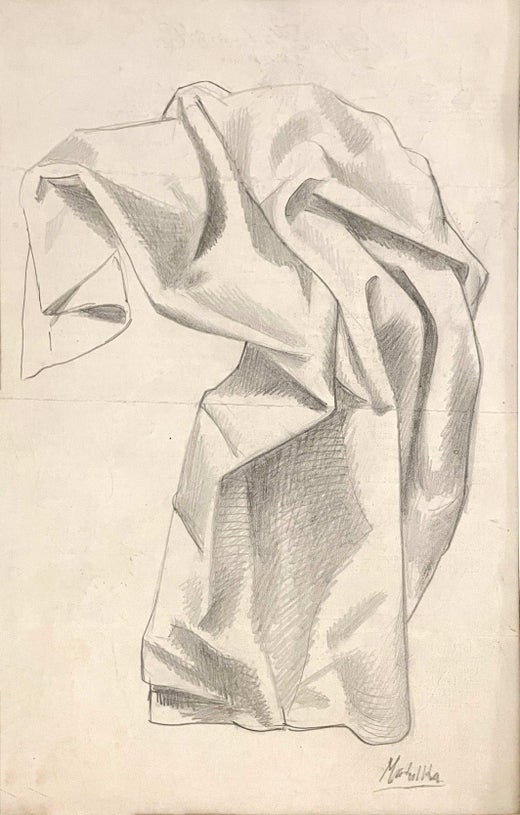Items Similar to Untitled (Study of Classical Drapery)
Want more images or videos?
Request additional images or videos from the seller
1 of 8
Jan MatulkaUntitled (Study of Classical Drapery)ca. 1930
ca. 1930
About the Item
A graphite on paper, study of a classical drapery by artist Jan Matulka. The image is drawn on the back of a typewritten, folded sheet of stationery, from Dyer, Hudson & Co., New York, NY, dated Jan. 28, 1938. Estate stamped on reverse.
Jan Matulka was bon in Prague Czechloslovakia in 1890. In 1907, he immigrated to the Bronx New York with his single mother. From 1908-1917, Matulka studied at the National Academy of Design, winning the Pulitzer Traveling Scholarship in 1917. He traveled to Paris in 1919 and 1927, where he developed his signature Cubist style. He had his first one-man exhibition in New York in 1925. From 1929-1931, Matulka taught at the Art Student's League and created murals for the WPA in the 1930s. He died in New York in 1972.
- Creator:Jan Matulka (1890-1972, American)
- Creation Year:ca. 1930
- Dimensions:Height: 8.5 in (21.59 cm)Width: 11 in (27.94 cm)
- More Editions & Sizes:Matted to 16" x 20"Price: $650
- Medium:
- Movement & Style:
- Period:
- Condition:See Photos. Please note that this drawing is created on the back of a typewritten, folded sheet of stationery, from Dyer, Hudson & Co., New York, NY, dated Jan. 28, 1938.
- Gallery Location:Chicago, IL
- Reference Number:
Jan Matulka
Matulka studied at the National Academy of Design before traveling to the American Southwest, where he grew inspired by Native-American and Hispanic cultures. Matulka used this inspiration upon returning home to create representational yet distorted artworks. Matulka fluidly oscillates between abstraction and figural painting. He has had many solo exhibitions across NYC and has had his work displayed in notable locations such as The Brooklyn Museum, the Museum of Modern Art, the Whitney Museum of American Art, the Guggenheim Museum, and the Smithsonian American Art Museum.
About the Seller
5.0
Vetted Seller
These experienced sellers undergo a comprehensive evaluation by our team of in-house experts.
Established in 2000
1stDibs seller since 2023
12 sales on 1stDibs
Typical response time: <1 hour
- ShippingRetrieving quote...Ships From: Chicago, IL
- Return PolicyThis item cannot be returned.
More From This SellerView All
- Still LifeBy Stanley BieleckyLocated in Chicago, ILA Cubist black & white graphite drawing of fruit by artist Illinois and Michigan artist Stanley Bielecky.Category
1940s American Modern Drawings and Watercolor Paintings
MaterialsGraphite
- Still Life with Hammer, Palette and ChopperBy Jan MatulkaLocated in Chicago, ILA graphite on pencil drawing of Surrealist still life of an egg beater by artist Jan Matulka. A leading Modernist, Jan Matulka was born in Prague Czechoslo...Category
1930s Modern Still-life Drawings and Watercolors
MaterialsGraphite, Paper
- Still Life with Alarm Clock and MandolinBy Jan MatulkaLocated in Chicago, ILA graphite on pencil drawing of Surrealist still life of an egg beater by artist Jan Matulka. A leading Modernist, Jan Matulka was born in Prague Czechoslo...Category
1930s Modern Still-life Drawings and Watercolors
MaterialsGraphite, Paper
- Still Life with Egg BeaterBy Jan MatulkaLocated in Chicago, ILA graphite on pencil drawing of Surrealist still life of an egg beater by artist Jan Matulka. A leading Modernist, Jan Matulka was born in Prague Czechoslo...Category
1930s Modern Still-life Drawings and Watercolors
MaterialsGraphite, Paper
- Still Life with Profile and HangerBy Jan MatulkaLocated in Chicago, ILA graphite on pencil drawing of Surrealist still life of an egg beater by artist Jan Matulka. A leading Modernist, Jan Matulka was born in Prague Czechoslo...Category
1930s Modern Still-life Drawings and Watercolors
MaterialsGraphite, Paper
- Untitled (Still Life, Interior)By Harold HaydonLocated in Chicago, ILA detailed ink on paper drawing of a still-life in an interior by artist Harold Haydon. Harold Emerson Haydon was born in Fort William, Ontario, Canada in 1909. Haydon came to Chi...Category
1950s American Modern Still-life Drawings and Watercolors
MaterialsPaper, Ink
You May Also Like
- Pencils and PensBy George RickeyLocated in Fairlawn, OHPencils and Pens Graphite on paper, 1987 Signed and dated by the artist lower right (see photo) Condition: Excellent Image/Sheet size: 13 5/16 x 10 11/16 inches Rickey, a noted kine...Category
1980s American Modern Still-life Drawings and Watercolors
MaterialsGraphite
- Untitled, Still Life of ShellLocated in Fairlawn, OHUntitled, Still Life of Shell Graphite on paper, 1945-1951 Signed lower right in pencil "Bisttram" (see photo) Condition: Excellent Sheet size: 9.63 x 7 .5 inches EMIL BISTTRAM (189...Category
1940s American Modern Still-life Drawings and Watercolors
MaterialsGraphite
- Sunflower StudyBy Charles E. BurchfieldLocated in New York, NYEstate stamp lower right: C-139Category
Early 20th Century American Modern Still-life Drawings and Watercolors
MaterialsPaper, Pencil
- UNTITLED No. 26Located in New York, NYAvant-Garde ArgentineCategory
1970s American Modern Still-life Drawings and Watercolors
MaterialsPaper, Pencil, Watercolor, Charcoal, Conté
- Blanche Grambs, (Cooking Still Life: Bread, Olives, Potato, Mushrooms)Located in New York, NYIn the 1950s and 60s Grambs worked on many commissions. This drawing was probably for a magazine, perhaps House and Garden or House Beautiful. It is signed and dated in pencil on the...Category
Mid-20th Century American Modern Figurative Drawings and Watercolors
MaterialsInk, Pencil
- Two Wood Ducks on a Flowering BranchBy Joseph StellaLocated in New York, NYJoseph Stella was a visionary artist who painted what he saw, an idiosyncratic and individual experience of his time and place. Stella arrived in New York in 1896, part of a wave of Italian immigrants from poverty-stricken Southern Italy. But Stella was not a child of poverty. His father was a notary and respected citizen in Muro Locano, a small town in the southern Appenines. The five Stella brothers were all properly educated in Naples. Stella’s older brother, Antonio, was the first of the family to come to America. Antonio Stella trained as a physician in Italy, and was a successful and respected doctor in the Italian community centered in Greenwich Village. He sponsored and supported his younger brother, Joseph, first sending him to medical school in New York, then to study pharmacology, and then sustaining him through the early days of his artistic career. Antonio Stella specialized in the treatment of tuberculosis and was active in social reform circles. His connections were instrumental in Joseph Stella’s early commissions for illustrations in reform journals. Joseph Stella, from the beginning, was an outsider. He was of the Italian-American community, but did not share its overwhelming poverty and general lack of education. He went back to Italy on several occasions, but was no longer an Italian. His art incorporated many influences. At various times his work echoed the concerns and techniques of the so-called Ashcan School, of New York Dada, of Futurism and, of Cubism, among others. These are all legitimate influences, but Stella never totally committed himself to any group. He was a convivial, but ultimately solitary figure, with a lifelong mistrust of any authority external to his own personal mandate. He was in Europe during the time that Alfred Stieglitz established his 291 Gallery. When Stella returned he joined the international coterie of artists who gathered at the West Side apartment of the art patron Conrad Arensberg. It was here that Stella became close friends with Marcel Duchamp. Stella was nineteen when he arrived in America and studied in the early years of the century at the Art Students League, and with William Merritt Chase, under whose tutelage he received rigorous training as a draftsman. His love of line, and his mastery of its techniques, is apparent early in his career in the illustrations he made for various social reform journals. Stella, whose later work as a colorist is breathtakingly lush, never felt obliged to choose between line and color. He drew throughout his career, and unlike other modernists, whose work evolved inexorably to more and more abstract form, Stella freely reverted to earlier realist modes of representation whenever it suited him. This was because, in fact, his “realist” work was not “true to nature,” but true to Stella’s own unique interpretation. Stella began to draw flowers, vegetables, butterflies, and birds in 1919, after he had finished the Brooklyn Bridge series of paintings, which are probably his best-known works. These drawings of flora and fauna were initially coincidental with his fantastical, nostalgic and spiritual vision of his native Italy which he called Tree of My Life (Mr. and Mrs. Barney A. Ebsworth Foundation and Windsor, Inc., St. Louis, illus. in Barbara Haskell, Joseph Stella, exh. cat. [New York: Whitney Museum of American Art, 1994], p. 111 no. 133). Two Wood Ducks...Category
20th Century American Modern Still-life Drawings and Watercolors
MaterialsColor Pencil

